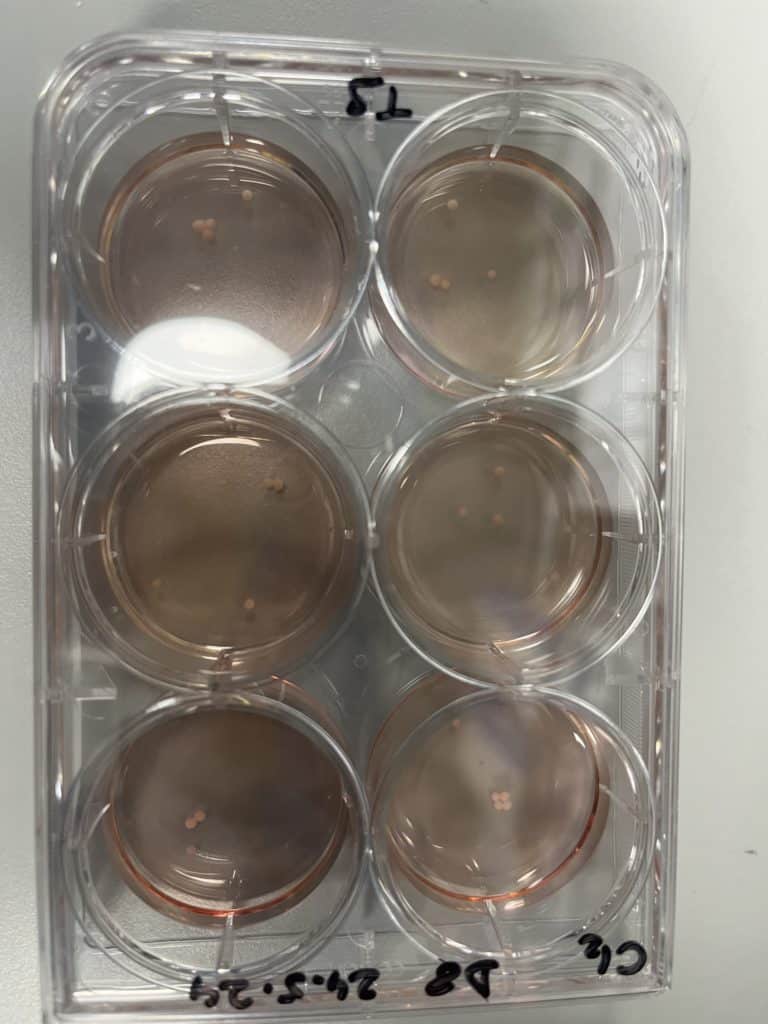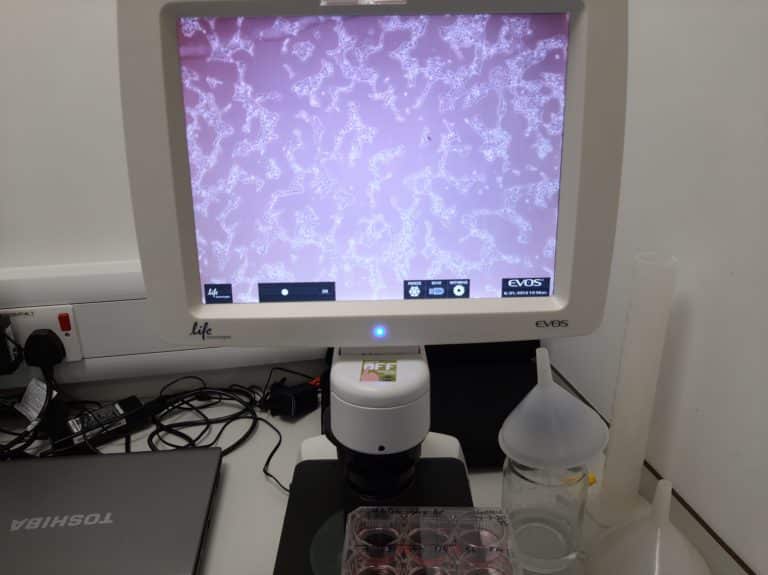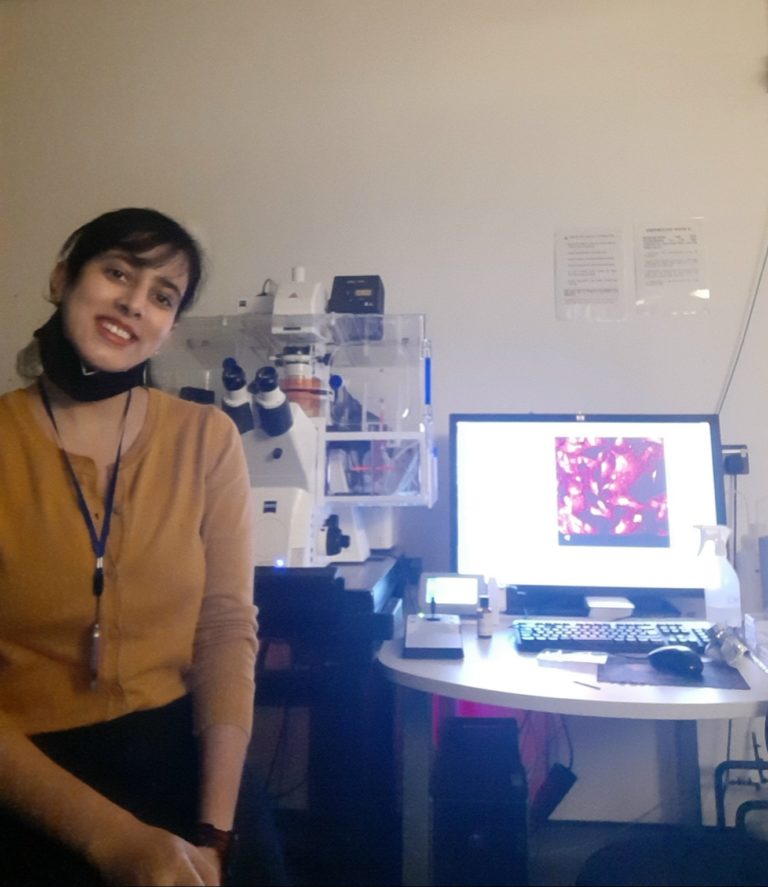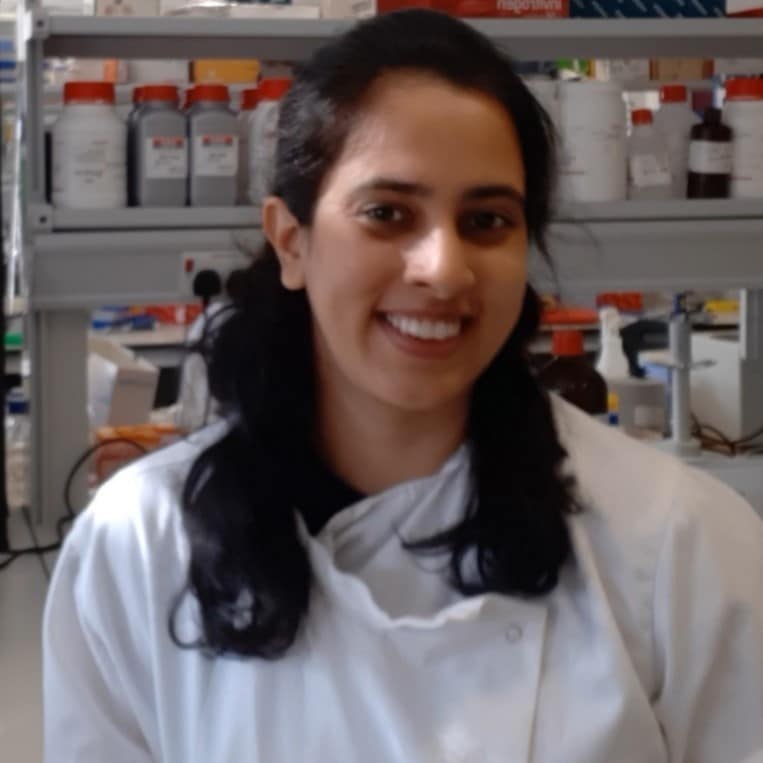Tanya Singh
Brain Scientist
Hi! I’m Tanya, a neuroscientist at University of Oxford. My job is to figure out what happens when the brain gets sick and how to fix it.
My story

Me with my family
I grew up in a small town called Basti, in Uttar Pradesh, a northern state in India. Though Basti is small, it is full of serene greenery and ancient temples. My grandfather worked as a horticulture inspector at the Horticulture R&D Training Centre. During our summer vacations, my brother and I used to spend time at his lovely outdoor office enjoying eating delicious mangoes right off the branches. Learning was always an adventure there!
My dad, a mathematics lover, turned numbers into fun challenges for me and my younger brother, while my mom, a Sanskrit scholar, showed us the beauty of one of the world’s oldest languages. This sparked my curiosity – how does our brain handle all these different learnings, and what happens if it doesn’t work the way it should? While my brother fell in love with computers and coding, I was drawn to biology and chemistry. In college, my passion for science took off, and I landed a job in a research lab. That’s where I stumbled upon stem cells – amazing little cells that can transform into brain cells! This fascination brought me to the UK on a scholarship, where I earned my PhD at Cardiff University in Wales. Today, I’m at Oxford University, using stem cells to uncover the mysteries of Parkinson’s disease.
My research

Organoids in a plate
Imagine solving brain puzzles every day! That’s what I do. I’m working on Parkinson’s disease which makes it hard for people to move and think like they normally would.
It’s challenging to study healthy brain tissue alongside diseased brain tissue, as we can only get brain samples from patients after they pass away. This means we can’t study the early stages of the disease or understand how it starts. To overcome this, I use something pretty amazing: tiny, lab-grown mini-brains, called brain organoids! I grow these organoids in the lab and feed them with nutrients and signals to help them function like real brains. These organoids are created from special stem cells known as induced pluripotent stem cells (iPSCs), which have the unique ability to renew themselves indefinitely and transform into a wide range of cell types found in the human body. These iPSCs can be generated from any somatic cells of human body like skin, blood, hair or urine.

IPSCs under microscope
By starting with iPSCs, I follow the path of human brain development, which allow me to study the disease from its earliest stages through to its progression. Once I’ve successfully generated these brain organoids, I use various molecular biology techniques to analyse gene and protein expression during their development, comparing these patterns to those in healthy brains to identify what might be driving the disease.

Taking pictures of my cells using confocal microscope
With these brain organoids, I can see how Parkinson’s disease begins and spreads. During my experiments, I observe how brain cells interact and figure out what goes wrong. By solving these puzzles, I hope to find new treatments to make life better for people with Parkinson’s.
Fun facts about me!
As a kid, I loved playing badminton and cricket with my brother and friends; we were always running around, having a blast! When the summer heat hit, I’d escape into board games like Snakes and Ladders, Chess, and Ludo. I also got into all sorts of crafts for school projects, from painting to knitting, and even tried some fun DIYs.
Now, when I’m not in the lab, you’ll still catch me on badminton court, watching a game of Cricket, conquering levels on my Nintendo Switch, or painting a peaceful landscape.
I started out studying plants and animals before switching to research about the human brain. Science is full of surprises, you can start anywhere and end up doing something amazing!
Why I love science
Science is solving the coolest mysteries in the universe. Every day, I learn something new and work on problems that could help people. If you’re curious and love asking “Why?” or “How?”, you could become a scientist too!
Stay curious, and maybe one day, you’ll be solving your own amazing puzzles!


